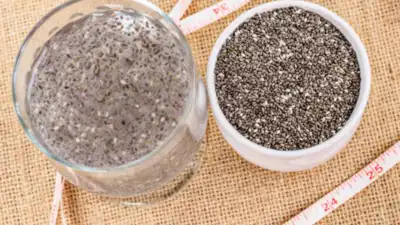Chia seeds have surged in popularity thanks to their nutrition-packed punch—loaded with fiber, omega‑3s, protein, antioxidants, and essential minerals. Bloggers, influencers, and gut health gurus swear by the trendy chia‑water “internal shower” as a gentle constipation cure. But here’s the kicker: this fiber hero can become a gut villain if you’re not hydrate smart. Blunders like skipping proper soaking or slurping them dry turn what should soothe your system into a traffic jam in your digestive tract. Let me break it down.
One ounce of chia seeds (roughly two tablespoons) delivers around 10–11 grams of fiber—a real boost toward the daily recommended 25–35 grams. They contain both soluble and insoluble fiber, which helps soften stool, add bulk, and support healthy gut bacteria. When fully soaked, they form a gelatinous gel called mucilage, hydrating your colon and making bowel movements smoother.
Video
The rise of internal shower: A popular chia seed trend
If your feed’s been filled with chia seeds floating in lemon water, you’ve already stumbled upon the “internal shower” craze. This wellness trend went viral after entrepreneur and gut-health enthusiast Dr. Daryl Gioffre introduced the idea as a natural way to “flush out” the digestive system. TikTok took it and ran — with millions of views, reactions, and, well… urgent bathroom testimonials.
What’s in this social media special?
- 1 tablespoon of chia seeds
- 1 glass of water (8–10 oz)
- Juice from half a lemon
- Optional: a pinch of sea salt
Let it sit for 15–30 minutes until it gets that jelly-like consistency, then drink up — ideally on an empty stomach. According to fans, it’s supposed to “clear you out” and relieve constipation fast.
People trying this trend without soaking the seeds long enough (or chugging without enough water) have reported:
- Bloating
- Cramps
- Worse constipation
- Even choking risks (yep — dry chia seeds can swell mid-swallow)
And here’s the kicker: the “cleansing” sensation isn’t always from detox magic. It’s often just… a fiber overload.
The one mistake that can backfire
So what’s the deal‑breaker? Eating dry chia seeds or not soaking them properly. When dry seeds hit your gut, they absorb fluid inside you—growing rapidly and potentially forming a dry, concrete‑like mass. That’s exactly the opposite of what you want. It can cause bloating, gas, cramps, and even worsen constipation.
Registered dietitian Alyssa Simpson puts it bluntly: “If you gulp it down without letting the seeds soak long enough, you might end up bloated, gassy or feeling backed up,” she told NY Post. She likens dry chia to trying to pour oatmeal into a dry drain—nothing goes where it should.
Here’s how to keep chia seeds helpful—not harmful
- Soak seeds for at least 15–30 minutes (ideally 20) before consumption, so they fully swell in your glass—not inside your gut.
- Start small, maybe one teaspoon to one tablespoon, then build up gradually to two tablespoons daily as you stay well‑hydrated.
- Drink plenty of water—hydration helps fiber move through your system. Too little fluid can make things worse, not better.
- Listen to your body—if chia triggers bloating, pain, or constipation, cut back or pause.
